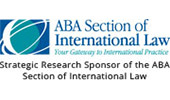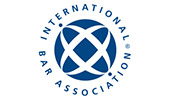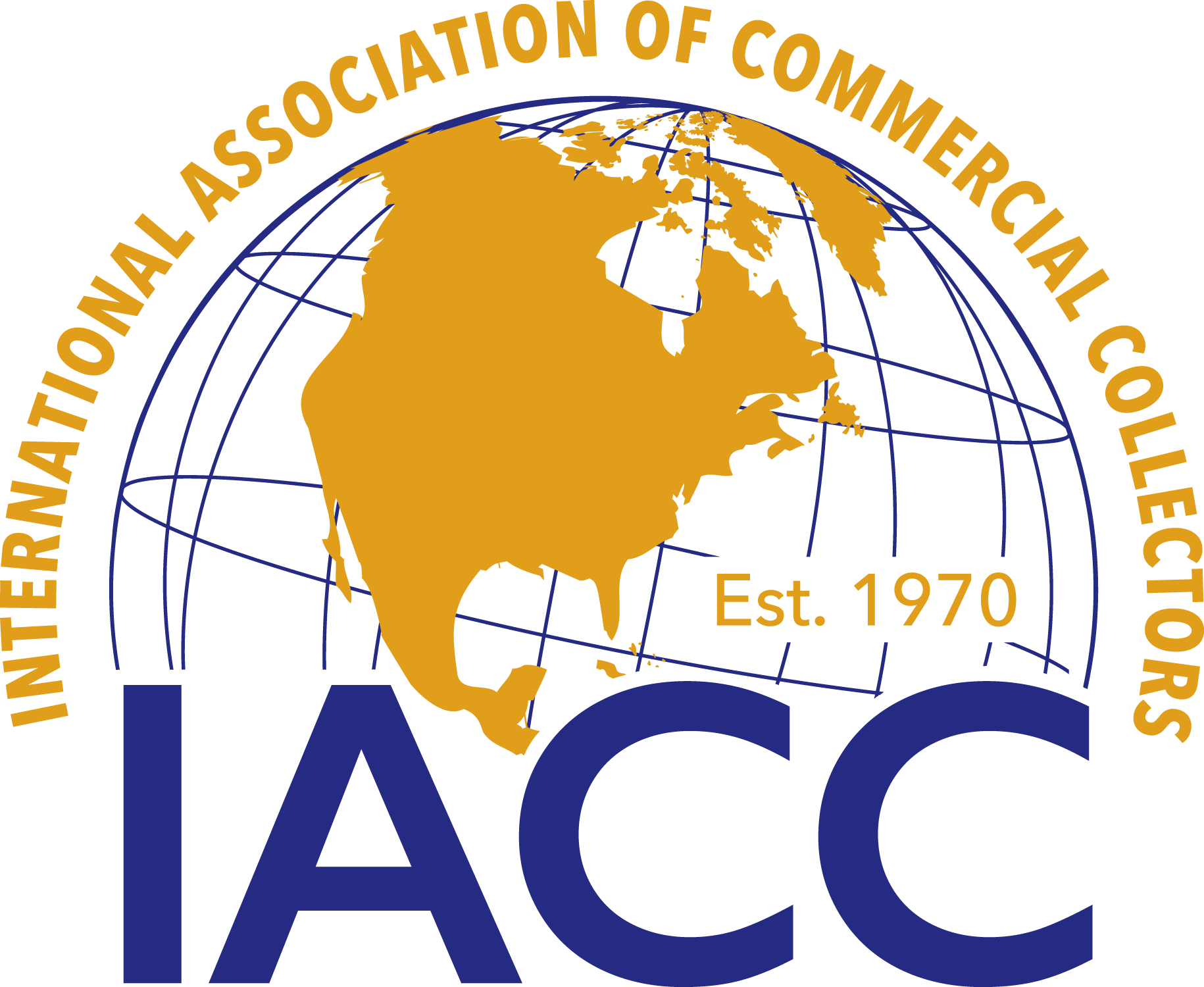After the massive economic and political crisis in Argentina in 2001; a period with demonstrations- clashes between demonstrators, the police causing several demonstrators death-, civil and social unrest, where Argentina had 5 presidents in a week; there was a president elected by the senate in a context of extreme economic and political emergency. In 2003 elections were called and Mr. Néstor Kirchner was elected president with 22% of the votes. There was a vacuum of power.
After Mr. Kirchner´s initial four-year term, in 2007, his wife – Cristina Kirchner – was elected president. Mr. Kirchner died in 2010 and in 2011 his wife was reelected for another four-year term. This 12-year period of the Kirchners in power would end in December 2015.
During these twelve years in power the Kirchner couple has changed and/or amended most of the legal, political and economic institutions in Argentina. The electoral system, the judiciary system, the media law system, and there was an attempt to amend once again the Constitution which was halted due to the poor result of the 2013 legislative elections.
Among these drastic changes in the Argentine legal system, there was the complete change of the Argentine Civil Code and the Argentine Commercial Code that had been in force since 1869 the Civil Code and since 1859.
The commission to propose the new legislation was called by a presidential decree in 2011 and was composed of three members; two Supreme Court Justices and one former judge.
The project to unify and enact new legislation with the Civil and Commercial Code had been passed into law on October 2014 with – to be honest- little debate. This does not mean, however, that the reform is unnecessary or evil; it is just that there was little consensus as to the need or debate over the reform.
Initially, the new Civil and Commercial Code (as it is called now, or the “CCC”), whose enactment took place in October 2014 would come in effect on January 1st 2016, but another law on December 2014 moved forward the application of the CCC to August 1, 2015, therefore finally the CCC came in effect on August 1, 2015. In other words, Argentina´s two pillars of legislation (the Civil Code and the Commercial Code) that had been in force for over 150 years were completely changed and amended in less than ten months.
The CCC introduces many amendments that may affect our clients. In this article, we will discuss the main changes affecting trusts, the matrimonial property regime, forced heirship rules and the basic amendments to the corporate law regime under the CCC.
1. Amendments to trusts regulations.
The CCC amends the current Argentine Trust Law (Law No. 24,441, the “Trust Law”). Trusts are now regulated in Chapter 30 of the CCC, which incorporates suggestions of legal scholars and case law with respect to certain issues of interpretation and application of trust law.
The main new introductions of the CCC are the following:
- Property that may be held in trust:
Pursuant to Section 1670 of the CCC, the entirety of an individual or company´s assets may be held in trust. However, future inheritances cannot be held in trust. Moreover, guaranties cannot be assigned without the credit that the guarantees serve as such. In other words, interest in secured property cannot be assigned without their secured credit secured, and therefore, they cannot be held in trust. In this sense, Section 2186 of the CCC provides that “…interest in secured property is accessory to the secured obligation. It is not transferable without the secured obligation, and is terminated with the secured obligation, except when established by law…”
- Obligation to hire insurance:
Section 1685 of the CCC provides that “notwithstanding [the trustee’s] responsibility, the trustee has a duty to purchase insurance against civil liability to cover damage caused by the trust property”. This will increase the cost of setting up and managing a trust. This Section provides that when the trustee fails to purchase insurance or when the insurance coverage proves unreasonable with respect to risk or amounts, the trustee is responsible under the terms of Section 1757. Therefore, in this case, the trustee is strictly liable for the damage caused by the risk or defect of the assets held in trust.
- The trustee may also be a trust beneficiary:
Although current Trust Law did not expressly establish a prohibition for the trustee to be a trust beneficiary, most scholars believed that this prohibition was implied by such Law. Now, under Section 1673 of the CCC, it is expressly established that the trustee can also be a trust beneficiary; in which case, however, he/she must avoid any conflict of interests, and must act for the benefit of the other parties to the trust agreement. With regard to the remainder beneficiary (fideicomisario), however, Section 1672 of the CCC provides that the trustee cannot be a remainder beneficiary.
- Trust-backed obligations – Guarantee Trust (Fideicomiso en Garantía):
Section 1680 of the CCC introduces definition of the guarantee trust or fideicomiso en garantía that allows for trust-backed obligations, establishing that if a specified obligation is backed by a trust, the trustee may apply the sums of money constituting the trust property, including sums of money coming from judicial or extrajudicial recovery of claims or rights in trusts, to the payment of the secured obligation.
2. Amendments to the Matrimonial Property Regime.
Title II of the CCC refers to the matrimonial property regime, Chapter I refers to the general provisions of the matrimonial property regime and Section 1 deals with the matrimonial conventions, a whole new concept under Argentine law.
The main amendment that the CCC introduces is that, based on the principle of free will, the future spouses have now the possibility of opting, by entering into marriage conventions (the “Conventions”), between (i) a shared property regime, or (ii) a separate property regime. Section 463 of the CCC establishes that in the event that no convention is made or the convention does not set forth any provision regarding the property regime, the traditional shared property regime will be applied (Section 463).
The former civil code, in force until August 1st, 2015, characterized the marriage property regime as the formation of a mass of goods that, upon termination of marriage, would be shared between the spouses. In which case, each of them would have a common expectation on the acquired goods. The former civil code provided a legal, imperative and immutable regime. Prenuptial conventions were allowed only in the situations set forth in the civil code, which did not include the right to opt for a particular regime.
In accordance with Section 446 of the CCC, Conventions may be created for the purpose of: (i) designation and appraisal of the goods that each of the future spouses bring to the marriage, (ii) admission of debts, (iii) donations made between each other and (iv) option chosen taking into account the regimes contemplated in the CCC. The abovementioned section introduced the possibility for future spouses to enter into marriage conventions, but at the same time, it limits the scope of such agreements.
Section 448 of the CCC provides that in order for the Conventions to be valid, they must be executed by a notarially recorded instrument (escritura pública). Moreover, for the said conventions to be effective vis-à-vis third parties, the marriage certificate must include a note in the margin specifying the regime chosen.
In the event that the spouses decide to change the regime, the amendment must also be made by Convention and by a notarially recorded instrument. In addition, the spouses must have been married for at least one year (Section 449). In the event that there are creditors affected by this change, they will have one year to object, as from the date they became aware of the change.
- Regime of shared property.
Notwithstanding some changes, the new regime of shared property is still characterized by the distinction between personal assets and shared property. Each spouse is not entitled to receive any personal assets belonging to the other spouse upon dissolution of the marital partnership. On the other hand, shared property must be shared because it is presumed that the acquisition of the said assets was carried out jointly. Each spouse is liable to their creditors with their own assets and the shared property acquired by them. For the cost of maintenance and repair of shared property, the spouse is also liable for the debts he/she did not incur the debt, but only with his or her shared property.
Section 464 of the CCC sets forth a list of personal assets including, among others, assets that each spouse owns at the moment marriage was solemnized, assets acquired after marriage either by inheritance, legacy or gift. It should be noted that if such assets were jointly acquired, they will be deemed personal assets in equal proportion. This is the reason why it is so important to specify in the marital agreements which are the assets that each spouse contributes to marriage.
As a general rule, all assets that are not personal will be shared. Section 465 of the CCC establishes a list of shared property, including, among others, assets acquired at random games, proceeds resulting from the profession of each spouse, and assets acquired after marriage whose right has vested prior to divorce.
Each spouse is entitled to the full management and disposal of his/her personal assets. However, the management and disposal of shared property belongs to the spouse that has acquired them. The exception to this rule is the consent of the other spouse for transferring or taking out mortgages on recorded shared property, shares of stock or businesses.
- Separate property regime.
The main amendment of the CCC is the regime of separate property. Through this regime, the spouses maintain the full management and disposal of their personal assets, and each of them is liable for the debts each of them incurred, except those incurred by one of the spouses to pay for ordinary household needs, or the maintenance and education of their children (Section 461). It should be noted that only in these cases the spouses are jointly liable. The regime terminates upon dissolution of marriage or by modifying the regime agreed on between the spouses. Once marriage is dissolved, the undivided property, which could lead to conflict of interests, will be divided in accordance with the provisions regarding inheritances set forth in the CCC.
- Provisions common to both regimes.
Notwithstanding the differences between the two regimes, there are several provisions in common, such as: the duty of contribution and support between spouses, household and common children, the need for spousal consent to dispose of the rights related to family housing, mandates between spouses to represent each other, and legal representation when one spouse is absent or unable to express their will.
Moreover, it should be noted that the termination of marriage under either the shared property or the separate property regime, will result from the dissolution of the marriage, or by modifying the regime agreed on between the spouses.
3. Amendments to Forced heirship rules.
The CCC, under title X, introduces some amendments to forced heirship rules. In Argentina, there are two systems regarding inheritance: (i) a system that provides that the heirs will be those designated by the testator in a will, (ii) another system that provides that the heirs will be those established by law, regardless of any will.
As a result of the combination of these two systems, there are three types of heirs in our country: (i) forced heirs (descendants, surviving spouse, and ascendants), (ii) non-forced heirs (brother, sister, nephew, uncle, aunt, and cousin), and (iii) testamentary heirs.
The forced heirship portion is a portion of the estate that law reserves for certain heirs (forced heirs). In consequence, pursuant to Section 2444 of the CCC, descendants, ascendants and the surviving spouse have a reserved portion in the deceased estate which cannot be deprived either by will or by any free inter vivos act (gifts).
The forced heirs, i.e. those that are legally entitled to inherit regardless of any will (children, spouse, and parents of the decedent), hold possession of the assets of the estate from the moment the decedent dies (Section 2280). This means that upon death of the decedent, the heirs have all rights and shares of the decedent in an undivided way, except those that cannot be inherited.
However, the remaining heirs, either established by will or established by law, such as brothers, sisters, uncles, aunts, nephews or cousins, cannot hold possession of the assets of the estate without the intervention of a judge, before whom the abovementioned heirs must demonstrate the death of the owner of such assets and their right to inherit.
- Proceedings
Pursuant to Section 2450, the forced heir is entitled to initiate legal proceedings to receive his/her forced portion. These proceedings may be also initiated when the decedent has left no assets upon his death, but has made gifts. Section 2451 governs the supplementary action by means of which the forced heir who was given less than his forced portion is entitled to require his supplementary portion. In accordance with the abovementioned provisions, section 2452 and 2453 set forth the abatement of gifts and legacies, in order to receive or supplement their portions.
- Forced portions
The new Code modifies the reserved portions as follows: (i) descendants, the forced portion changes from 4/5 to 2/3; (i) ascendants, from 2/3 to 1/2; (iii) the surviving spouse maintains his/her ½ reserved portion (Section 2445). The abovementioned portions are calculated taking into account the sum of the liquid value of the estate at the time of the decedent´s death and the gifts provided for each of the forced heirs at the time the gift was made.
For the calculation of the portion corresponding to each descendent only claimed gifts, which were made 300 days prior to his birth or, the birth of the ascendant to whom he represents, will be taken into account. With regard to the surviving spouse, the gifts made after marriage are taken into account (Section 2445).
Pursuant to Section 2446, if there are only descendants or ascendants, the portion available will be calculated in accordance with the applicable reserved portions. If there are heirs with different forced portions, the portion available will be calculated in accordance with the greater reserved portion.
- Improvement
The CCC introduces the concept of improvement, which was unknown in our legislation, allowing for the decedent to reduce the reserved portion in order to exclusively improve it for disabled heirs, whether they are descendents or ascendants. This is set forth in the first part of Section 2448, which establishes that the decedent can dispose, by the means he finds more appropriate, even by a trust, in addition to the available portion, 1/3 of the reserved portions in order to apply them for a strict improvement for disabled descendents or ascendants.
Section 48 of the CCC establishes that a disabled person is someone who suffers from a mental or physical disorder, either permanent or prolonged, who, in relation to his/her age and social environment entails considerable disadvantages for his/her family, social , educational or professional integration.
- Other amendments
The CCC introduces the process of bidding by means of which any of the heirs is entitled to request a bid for any of the assets of the estate in order for that heir to be adjudicated said asset for an amount greater than that of the appraisement, provided that the co participants do not exceed the offer (Section 2372).
Furthermore, Section 2493 of the CCC regulates the “testamentary trust”, though the rights of the forced heirs in the reserved portion must be considered. Notwithstanding this, Section 1670 expressly prohibits the creation of trusts over future inheritance.
4. Amendments to Corporate Law Regime.
General Regulations of the Civil and Commercial Code Affecting Companies.
Title II of the CCC refers to Legal Entities, Chapter 1 refers to the general part of legal entities and Section 1 deals with the personality of the legal entities.
The CCC provides for an extensive doctrine of piercing the corporate veil. Article 143 provide that legal entities have different personality than those of its members but Article 144 provides for an extensive version of the doctrine of piercing the corporate veil as it sets forth that when the entity is used for (i) the persecution of purposes different to those of the legal entity, or (ii) to breach the law, the public order or frustrating the rights of any person, then those acts shall be attributed to (a) partners, (b) associates, (c) members, or (d) controllers (direct or indirect), who shall be jointly and severally liable for the damages caused by the entity. We believe this wording of Article 144 of the CCC is too broad planting the seeds for innumerable claims for extended liability to persons that may have had nothing to do with the relevant operations of the entity.
The CCC classifies entities in either public or private. Public entities are the Federal State, the Provinces, the City of Buenos Aires, the municipalities, autarchic entities, foreign states, organizations created by public international law, and the Catholic Church.
The CCC defines as private entities: (i) companies, (ii) civil associations, (iii) simple associations, (iv) foundations, (v) churches, confessions, creeds, communities or religious entities, (vi) mutual entities, (vii) cooperatives, and (viii) building consortiums – this is a creation of the CCC-.
As to the legal pyramid, the CCC provides (Article 150) provides that private entities shall be governed:
- By the special laws (ie, the general corporate law that we will refer to later on), or by the CCC,
- By their bylaws and/or internal regulations, provided that the bylaws shall prevail over the internal regulations, and
- By ancillary laws of special laws.
Foreign private entities (incorporated overseas) shall be governed by the general corporate law.
Title II, Chapter I Section 3 of the CCC provides the general nature of private entities and their functioning. In this sense, the CCC provides that the following are the main attributes of private entities are:
- Name: the name of the entity shall be added with the relevant corporate structure (SA, SRL, etc.) and if the entity is being wounded up, the phrase “in liquidation” shall be added in the end. The name must be true, new, and distinctive with respect to other corporate names, trademarks, fantasy names, brands and/or other forms related to goods or services. The inclusion of names of individuals must be authorized by the relevant individuals which is presumed if the individual is a member of the entity.
- Domicile: The change of jurisdiction must by made by an amendment of the bylaws, but the change of domicile –if not included in the bylaws- can be made by the administration of the entity. Any and all notifications carried out in the registered domicile shall be considered valid and binding upon the entity.
- Assets: Entities must have assets (net worth). The entity in formation can register assets preemptively.
- Duration: The period of existence of private entities is considered unlimited unless it is limited by the law or by the bylaws of the entity.
- Purpose: Private entities must have a purpose that must be precise and determined.
As to the functioning of the so-called private entities – for our purposes, private companies- the CCC provides that:
- The amendments to the bylaws can be carried out as provided in the same bylaws or in the law, provided that its amendments shall only be valid (and have effects) as from the execution of such amendments and not as from the registration of such amendments.
- By laws shall have rules on government, administration and representation of entities. Absence of such rules, the following shall apply:
- The CCC provides for the authority of resolutions (of the board or shareholders) being adopted by electronic means (video conference, phone, etc.). Such resolutions shall be consented by all the relevant members. The minute must be signed by the president (implying only applicable to SA) and another administrator, providing how the resolution was adopted and maintaining a record of such resolution.
- Self-convened shareholders meetings are accepted (the CCC refers also to members of the “council” – it is unclear to us if this is applicable also to the board of directors), provided that the resolution is unanimous with the presence of all the relevant members.
- Article 159 provides for the fiduciary duties or directors and members of the entity.
- Liability: Liability of the administrators is unlimited, joint and several vis-à-vis the entity, its members and third parties for the damages caused by fault (no willful misconduct) by action or omission.
- When there are obstacles preventing the entity from making decisions, then the president or any of the co-administrators could perform conservatory acts, and there should be a partners’ meeting within ten days as from the execution of such acts.
- Mergers and spin-offs require the unanimous consent of all the members of the entity, unless provided otherwise in the bylaws.
5. Amendments to the Corporate Law as such.
As mentioned earlier, the law that enacts the CCC (26,994) also amends a number of other laws also affected by the CCC like the Argentine Corporate Law (“ACL”) number 19,550.
The first and main introduction of the ACL is the corporation (SA) of only one member. Article 1 of the ACL provides that there will be a company when one or more persons, according to the corporate types provided in the ACL, are obliged to make contribution in order to produce goods or services, participating in the profits and contributing to the losses.
The one-man corporation shall only be applicable to corporations (sociedad anónima) and a one-man corporation cannot have as member another one-man corporation. The main differences between the other corporate types and the one-man corporation are:
- The capital must be totally paid-in when incorporating the company (other companies only require 25% of the capital paid-in when incorporating),
- They must have a board of at least three independent auditors (that must be accountant, lawyers, or companies whose members are accountants or lawyers).
Section 23 of the ACL provides that any of the partners can represent the company showing the bylaws of the company. The limits to the members and managers provided in the bylaws can be invoked between the partners.
In connection with the liabilities the ACL (Section 24), and in contrast with the CCC, the partners of a company are liable vis-à-vis third parties equally and proportionately unless joint liability stems from:
- specific stipulation for joint liability with respect to one or several relationships,
- specific stipulation from the bylaws,
- the common rules of the corporate type chosen and in respect of which certain formal or fundamental requirements were not complied with.
In connection with the government, administration and representation of companies, section 23 provides that any of the members of a company can represent the company vis-à-vis third parties.
In order to purchase registered assets (real estate, trademarks, planes, vehicles, ships, etc.), the company will have to prove its existence and the powers of its representative that must be acquiesced by all the members of the relevant company.
6. Amendments to the Regime of the Public Registry of Commerce.
The CCC and the ACL refer now to the “Public Registry” in contrast with the formerly called “Public Registry of Commerce”. We will refer now the amendments to the regulation of the Public Registry (“PR”).
On July 31st 2015 the PR published its new Resolution 7/2015 (the “Resolution”). The Resolution is a comprehensive text that regulates all the procedures that are carried out by the PR and include all prior individual regulations of the PR adapting such regulation in the Resolution to the amendments to the corporate laws provided in the CCC and the ACL.
The Resolution (and this whole new registration system) will come into effect on November 2 ,2015, however, certain regulations are applicable since August 3, 2015 , such as:
- those relating to registration of trust agreements,
- those relating to one-man corporations,
- the cure procedure for companies not duly incorporated and
- the general system for incorporation, functioning, withdrawal of registration, dissolution, and winding up of civil associations and foundations.
As mentioned, the Resolution brings about the regulations and general resolutions issued in the past decade, thus re-arranges those former resolutions incorporating also certain applicable jurisprudence and the opinion of scholars.
The procedures initiated until November 2, 2015 and until their termination; however, the relevant applicant can request the application of the Resolution, if the relevant applicant believes that the terms of the Resolution are more favorable.
As from November 2, 2015 the Resolution will come into effect for all the procedures filed before the PR.
Conclusion
In summary, we have many changes to digest in a short period of time. The new CCC is quite different than the ones we had for over 150 years and the legislative technique is quite different; the former code had notes explaining the rationale under each article.
However, many of the amendments are welcomed. With regard to trusts, the amendments introduced by the CCC have maintained the systematization and text of the current Trust Law.
The amendments concerning the marriage property regime included in the CCC give individuals greater freedom in matters of management and disposal of property. The spouses-to-be may choose among two different property regimes, carrying different consequences. The CCC allows for the future spouses to protect their personal property and keep it away from the marital partnership.
In connection with forced heirship, here once again we see that the new CCC provides an interest solution, giving more freedom to individuals since the forced portions previously established by the Civil Code were strongly criticized – they were considered excessive. Overall, the CCC substantially improves the concept of forced heirship portions, both in its extension as well as in its clarity, in relation to the previous provisions set forth in the Civil Code.
Finally, corporate-wise we welcome the possibility to hold board meetings by electronic means, but do not understand why then the requirement to have a majority of members of the board being resident was maintained since members of the board can make decisions about the company by electronic means even being far from the corporate domicile. The other “major” improvement is the one-man corporation, but in our opinion, this will be hardly utilized since it implies a much more expensive burden for directors and shareholders.









